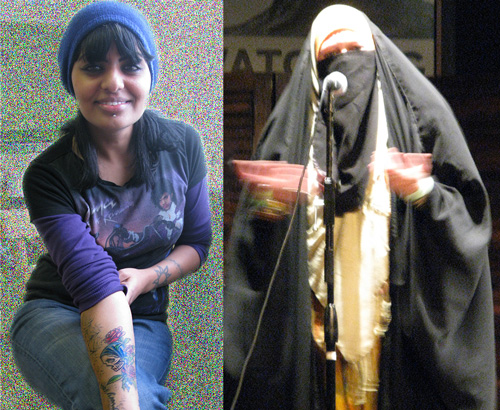Conversion Strategies and the Power to Define
British and American Muslim Performance in Bourdieu’s Field of Art
Diffusing Islamic Values When, in the last decades, a number of Muslims in non-Muslim majority countries in North America and Western Europe gained attention as (upcoming) performers in the genres of hip-hop, stand-up comedy, and performing poetry, this was perceived as a remarkable phenomenon by public media and social scientists. Firstly, a lot of these performers brought Islam to the fore in their artistic expressions in the public domain, whereas, secondly, the relation between art and Islam was and still is perceived as troublesome at various social levels. While gaining visibility after the multiple terrorist attacks, the phenomenon of entertaining Muslims is often understood as an expression of post-Islamism, the attitude of tolerance in Islamism that synthesizes contrasting opinions. Expressions of Muslims are explained as “purposeful art” and the performing arts as a repertoire to diffuse (positive) Islamic values. To comprehend the complex manifestations of religion in modern-day societies as reflected by these trends, existing social perspectives are no longer considered satisfactory. The present paper examines if the perspectives of symbolic interactionist, process, and relational sociology are indeed insufficient to discuss and explain several significant understandings of Muslims, their practices, and discourse regarding (popular) art. Do all of these artists equally pursue art with a social purpose? Are Islamic authoritative voices significant to everyone? Or do the artists follow wayward conversion strategies in order to achieve their objectives and become established?
Valid Cultural Mechanisms The literature related to the topic of Muslims, art, and Islam mentions to certain degrees the role of the state, religious institutions, ethnicity, and socio-economic circumstances, which present a very notable though partial explanation of the phenomenon of Muslim performing artists in popular culture in the Middle East, Europe, and the USA. At the same time, the expressions Islamic capital, Islamic heritage, Islamic identity, Islamic lifestyle, Muslim culture, Muslim sensibilities, Cool Islam, Islamic purposefulness, Muslim rap, and Islamic hip-hop make the phenomenon very much specific to the group of pious Muslims. For example: Is art with a social purpose a characteristic of Muslim performing artists? Are all Muslim artists equally inspired by the Islamic Revival? The terms raise questions regarding to what extent contemporary Muslims in the performing arts are part of the development of a “Muslim culture” and a related cultural, i.e., faith- and/or ethnic-oriented, identity. Whether Muslim performing artists can be regarded as part of the field of art and its cultural mechanisms remain undefined. Thus, from the perspectives of religion, ethnicity, and general cultural mechanisms, my question is: How is the field of Muslim performing artists actually structured and differentiated in Britain and the United States — or is it a homogeneous entity?
Van Tilborgh, Yolanda. “Conversion Strategies and the Power to Define: British and American Muslim Performance in Bourdieu’s Field of Art”. Sociology and Anthropology 4/5 (2016), 320–30. Free download: hrpub.org/download/20160430/SA4-19605420.pdf

